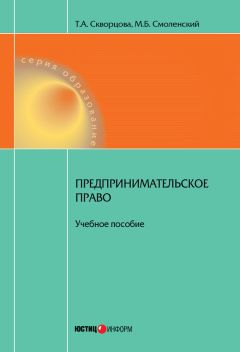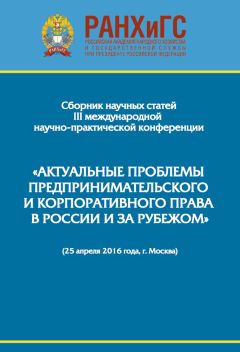– acceptor – акцептант
– bill of exchange – переводной вексель, тратта
– certificate of deposit – депозитный (вкладной) сертификат
– comakers – лицо, берущее на себя обязательство уплатить долг в случае несостоятельности должника
– demand note – простой вексель, срочный по предъявлении
– discounting – дисконт, операции по дисконту, учет (векселей), ставка учета, дисконтирование
– draft – переводный вексель, тратта, чек
– drawee – трассат (лицо, на которое выставлена тратта)
– drawer – трассант, векселедатель, чекодатель
– holder – держатель; владелец; предъявитель (например чека)
– endorsee – индоссат, жират (лицо, в пользу которого сделана передаточная надпись)
– endorser – индоссант, жирант (лицо, делающее передаточную надпись, например, на обороте векселя)
– maker – векселедатель, трассант
– negotiable instrument – оборотный документ
– note – извещение; авизо, кредитный билет; банковый билет; банкнота, счет, простой вексель; долговая расписка
– payee – лицо, получающее платеж; ремитент; векселедержатель
– sight draft – тратта, срочная по предъявлении
– time draft – срочная тратта (платежом через определенный срок после предъявления)
– trade acceptance – акцептованный торговый вексель
A negotiable instrument is a written document that is signed by the maker or drawer and that contains an unconditional promise or order to pay a certain sum of money on delivery or at a definite time to the bearer or to order. The concept of negotiability of commercial paper is simple: When an instrument is transferred by negotiation, the person receiving the instrument is provided with more protection than was available to the person from whom it was received. The person receiving the instrument is able, in many instances, to recover money on the instrument even when the person from whom the instrument was received could not have done so.
There are three basic kinds of negotiable instruments: drafts (including checks), notes, and certificates of deposit.
A draft (also known as a bill of exchange) is an instrument by which the party creating it orders another party to pay money to a third party. The one who draws the draft (that is, the one who orders money to be paid) is called the drawer. The one who is requested to pay the money is called the drawee. The one who is to receive the money is known as the payee.
Drafts may be presented to the drawee for payment, or for acceptance. When a draft is presented for acceptance, the drawee is requested to become liable on the instrument. To accept a draft, the drawee writes «accepted» across the face of the instrument and dates and signs it. By doing this, the drawee agrees to pay the instrument at a later date when it becomes due. An acceptance must be written on the draft, but it may consist of the drawee's signature alone.
A check is a special kind of draft that is drawn on a bank and is payable on demand. A check is also the most common type of draft.
A sight draft is payable as soon as it is presented to the drawee for payment. A time draft is not payable until the lapse of a particular time period stated on the draft.
A trade acceptance is a draft used by a seller of goods to receive payment and also to extend credit. It is often used in combination with a bill of lading, which is a receipt given by a freight company to someone who ships goods. If it is a sight draft, the buyer must pay the draft immediately to receive the bill of lading from the bank. If it is a time draft, the buyer must accept the draft to receive the bill of lading from the bank. The freight company will not release the goods to the buyer unless the buyer has the bill of lading.
Discounting means that the bank will buy the instrument at a price below its face amount with the aim of ultimately collecting the face amount.
A domestic bill of exchange is a draft that is drawn and payable in the country of origin. A draft that is drawn in one country but is payable in another is called an international bill of exchange, or foreign draft.
A note (often called a promissory note) is a written promise by one party, called the maker, to pay money to the order of another party, called the payee. In contrast with drafts, notes are promise instruments rather than order instruments, and they involve only two parties instead of three. They are used by people who loan money or extend credit as evidence of debt. When two or more parties sign a note, they are called comakers.
A demand note is payable whenever the payee demands payment. A time note, on the other hand, is payable at some future time, on a definite date named in the instrument. Unless a note is payable in installments, the principal (face value) of the note plus interest must be paid on the date that it is due. In an installment note, the principal together with interest on the unpaid balance is payable in installments (series of payments) at specified times.
A certificate of deposit is an acknowledgment by a bank of the receipt of money and promise to pay the money back on the due date, usually with interest.
In addition to drawers of drafts and checks, makers of notes, and payees of both types of instruments, there are other parties to commercial paper. They are the bearer, the holder, the holder in due course, the endorser, the endorsee, and the acceptor.
A bearer is a person who is in possession of a negotiable instrument that is payable to bearer or to cash. A person who is in possession of an instrument that has been indorsed in blank (by the payee's signature alone) is also a bearer. A holder is a person who is in possession of a negotiable instrument that is issued or indorsed to that person's order or to bearer. One who is a bearer is always a holder; however, one who is a holder may or may not be a bearer. A holder in due course is a holder of a negotiable instrument who is treated as favored and is given immunity from certain defenses.
An endorser is a person who indorses a negotiable instrument. This is done in most cases by signing one's name on the back of the paper.
An endorsee is a person to whom a draft, note, or other negotiable instrument is transferred by endorsement. An acceptor is a drawee of a draft who has promised to honor the draft as presented by signing it on its face.
To be negotiable, an instrument must be signed by the maker or drawer, and must contain no conditions that might in any way affect its payment.
An instrument is conditional, and thus not negotiable, if it states that it is subject to any other agreement; paid only out of a particular fund; charged to a particular account. An instrument may state that it «arises out of» another agreement without being conditional.
In addition to being unconditional, a negotiable instrument must contain a promise to pay (as in a note) or an order to pay (as in a draft).
A negotiable instrument must be payable in a fixed (clearly known) amount of money even though it is to be paid with stated interest or by stated installments; with stated different rates of interest before and after default or a specified date; with a stated discount or addition, if paid before or after the date fixed for payment; with exchange or less exchange, whether at a fixed rate or at the current rate; or with costs of collection, an attorney's fee, or both upon default.
Negotiable instruments must be made payable on demand or at a definite time. This requirement makes it possible to determine when the debtor or promisor can be compelled to pay. Without this information, the present value of an instrument cannot be determined.
Demand Paper is an instrument is payable on demand when it so states, or when it is payable «on sight» or «on presentation». The key characteristic of demand instruments is that the holder can require payment at any time by making the demand upon the person who is obligated to pay.
Certainty as to the time of payment of an instrument is satisfied if it is payable on or before a definite date. Instruments payable at a fixed period after a stated date or at a fixed period after sight are also considered to be payable at a definite time papers.
An acceleration clause on the face of an instrument hastens the maturity date. One such example reads, «In case of default in payments of interest (or of an installment of the principal), the entire note shall become due and payable.»
Extension clauses give the maker of a note the opportunity to extend the payment date to a further definite time. For example, a maker may make a note payable in six months but may include the right to extend it to one year without loss of negotiability.
The chief characteristic of a negotiable instrument is its capacity to circulate freely as an instrument of credit. This function is achieved and the intention of the maker (i.e., ease of transferability and payment of the amount indicated to a holder) is expressed by the words to the order of or to bearer. They are called the words of negotiability. Except for checks, instruments not payable to order or to bearer are not negotiable. Law allows checks (but not other instruments) that are not payable to order or to bearer to be negotiable.
An instrument is payable to order when it states that it is payable to the order of any person, i.e., the maker or drawer; the drawee; a payee who is not the maker, drawer, or drawee; two or more payees; an estate, trust, or fund; an office or officer by title; or a partnership or unincorporated association, with reasonable certainty.
An instrument is payable to bearer when it states that it is payable to bearer or the order of bearer, a specified person or bearer, cash or the order of cash, or any other indication that does not designate a specific payee.
Any instrument lacking one or more elements of negotiability, however, cannot be enforced until it is completed. Handwritten terms control typewritten and printed terms, and typewritten terms control printed terms. Words control figures, except where words are ambiguous (capable of being understood in more than one way). The numbering of, or the failure to number, an instrument does not affect its negotiability.
Exercise 1. Comprehension questions:
1. Identify the purpose of commercial paper.
2. Explain the concept of negotiability.
3. What are the types of negotiable instruments?
4. Give definition of a draft.
5. How are the parties, relating to a draft, called?
6. Identify different kinds of drafts.
7. Explain what a certificate of deposit means.
8. What are the requirements for negotiable instruments?
9. What elements of negotiable instruments may be omitted?
Exercise 2. Find in the text English equivalents to the following:
Акцептант; переводной вексель; вкладной сертификат; лицо, берущее на себя обязательство уплатить долг в случае несостоятельности должника; простой вексель; дисконт; переводный вексель; лицо, на которое выставлена тратта; векселедатель; лицо, в пользу которого сделана передаточная надпись; лицо, делающее передаточную надпись; оборотный документ; извещение; долговая расписка.
Exercise 3. Consult recommended dictionaries and give words or phrases to the following definitions:
Простой вексель; переводной вексель; оплата по предъявлении; подлежит оплате по приказу; коносамент; акцептированная банковская тратта; обеспеченный вексель; обыкновенный вексель; облигации на предъявителя; депозитный сертификат; банковский чек; банковский индоссамент; передаточная надпись; условие о сокращении срока исполнения обязательства; форма подписи; подпись торгового агента; безусловное обещание; определенная сумма; точно определенный срок.
Exercise 4. Be ready to talk on one of the following topics:
1. State the purpose of commercial paper.
2. Explain the concept of negotiability.
3. Identify the three kinds of negotiable instruments.
4. Name the parties to each kind of negotiable instrument.
5. Describe the effect of dates on negotiable instruments and determine which words control.
Exercise 5. Make up your own dialog on the case: In Banco Espanol De Credito v. State Street Bank & Trust Co., the correspondent bank-plaintiff credited «the amounts specified in the letters of credit against debts» owed it by two beneficiaries under the letter of credit. The plaintiff then forwarded the draft to a Boston bank, which was obliged to pay under the letter of credit, and the Boston bank refused to pay on the ground that there was fraud in the transaction. Banco Espanol responded that it was a holder in due course and that fraud could not be raised against it. The district court, in an opinion affirmed by the First Circuit, found that Banco Espanol had in fact given value, was a holder in due course and was entitled to recover from the Boston bank. The lower court held that the Spanish bank had given value because the credit given was not subject to revocation under the terms of the agreement between the Spanish bank and its Spanish customers. The appellate court affirmed on this ground and on the alternate that Banco Espanol gave «value» «even if the credit were revocable.»





